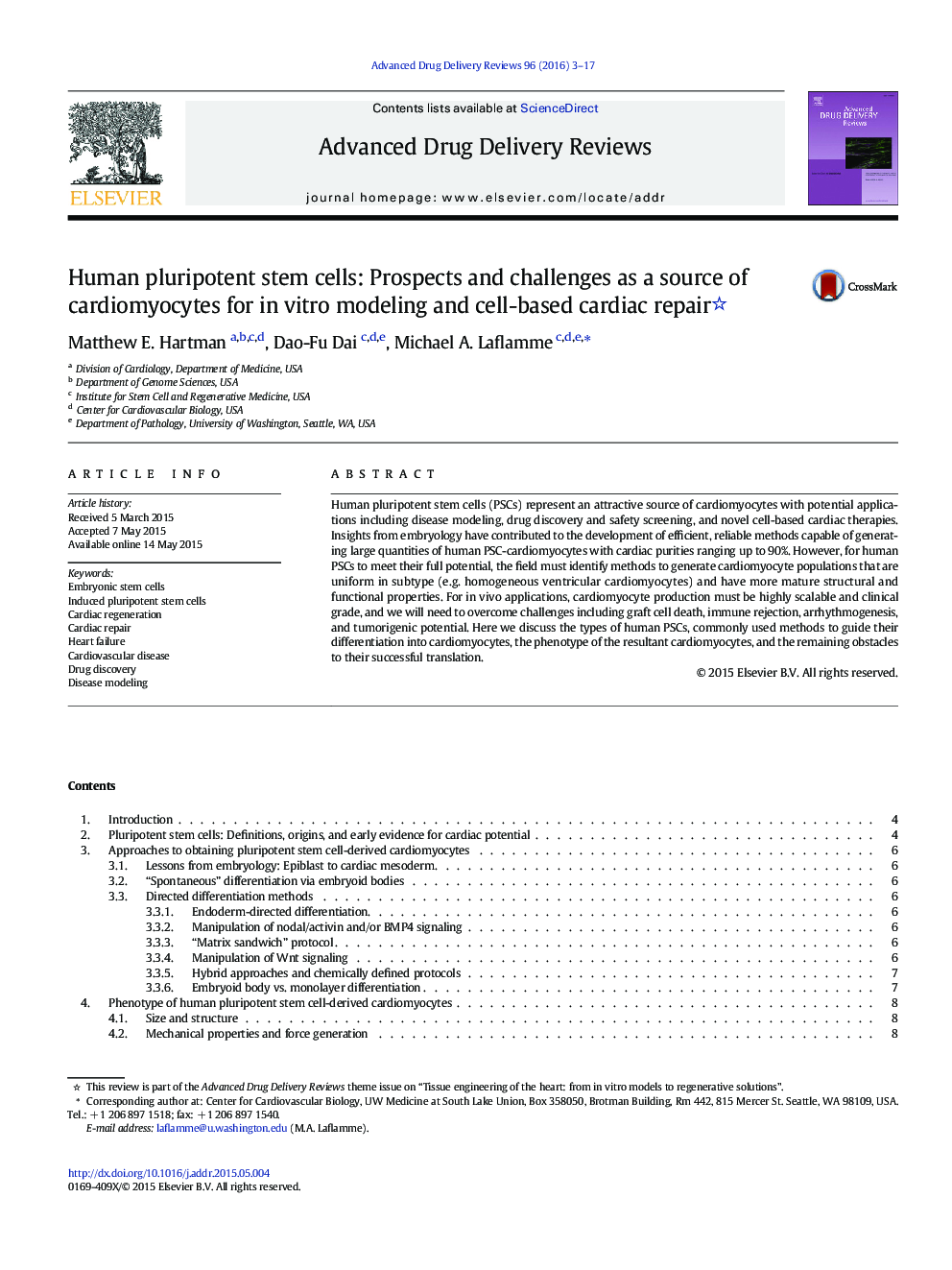| کد مقاله | کد نشریه | سال انتشار | مقاله انگلیسی | نسخه تمام متن |
|---|---|---|---|---|
| 2070792 | 1544568 | 2016 | 15 صفحه PDF | دانلود رایگان |
Human pluripotent stem cells (PSCs) represent an attractive source of cardiomyocytes with potential applications including disease modeling, drug discovery and safety screening, and novel cell-based cardiac therapies. Insights from embryology have contributed to the development of efficient, reliable methods capable of generating large quantities of human PSC-cardiomyocytes with cardiac purities ranging up to 90%. However, for human PSCs to meet their full potential, the field must identify methods to generate cardiomyocyte populations that are uniform in subtype (e.g. homogeneous ventricular cardiomyocytes) and have more mature structural and functional properties. For in vivo applications, cardiomyocyte production must be highly scalable and clinical grade, and we will need to overcome challenges including graft cell death, immune rejection, arrhythmogenesis, and tumorigenic potential. Here we discuss the types of human PSCs, commonly used methods to guide their differentiation into cardiomyocytes, the phenotype of the resultant cardiomyocytes, and the remaining obstacles to their successful translation.
Human pluripotent stem cells (PSCs) can be isolated from the inner cell mass (ICM) or reprogrammed from somatic cell sources (e.g. fibroblasts), yielding embryonic stem cells and induced pluripotent stem cells, respectively. Multiple protocols exist to guide the differentiation of both human PSC types into cardiomyocytes, including embryoid body (EB)- and monolayer-based methods. Human PSC-derived cardiomyocytes show tremendous promise, but a number of major obstacles must be overcome before they can be successful translated into a practical source of heart cells for disease modeling, drug screening and cell-based cardiac therapies.Figure optionsDownload high-quality image (180 K)Download as PowerPoint slide
Journal: Advanced Drug Delivery Reviews - Volume 96, 15 January 2016, Pages 3–17
